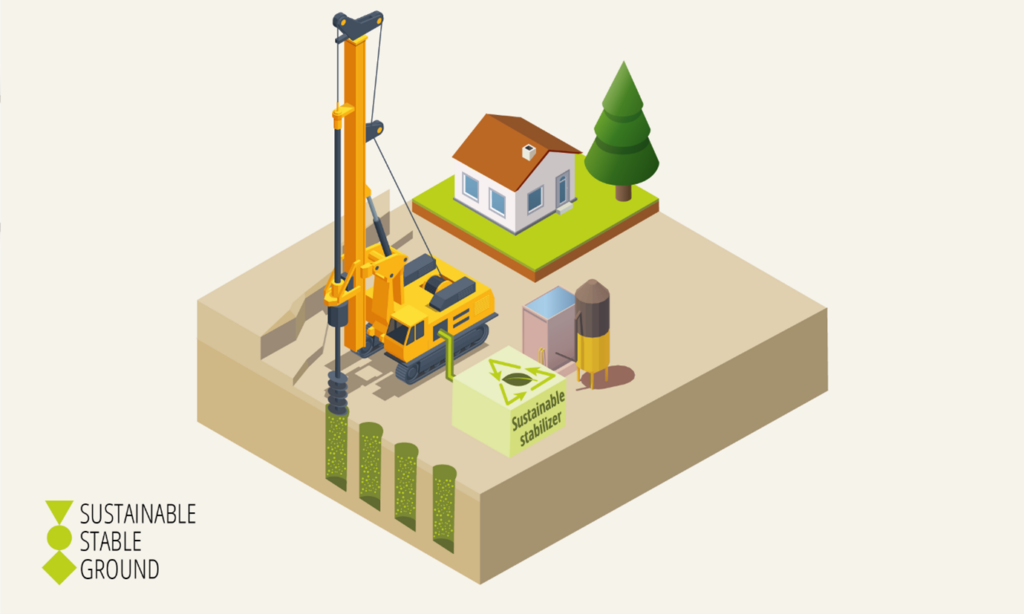Sustainability: NTNU and NGI are seeking for sustainable alternatives to replace cement in quick-clay stabilization projects

NTNU and NGI has recently started the project “Bærekraftig Grunn: Sustainable Stable Ground”, a large-scale interdisciplinary research project funded by RCN and will run from 2022 till 2026. The project is coordinated by Dr. Ali Amiri at the Department of Civil and Environmental Engineering. NTNU’s departments of structural Engineering, Physics, Chemistry, and Mechanical and Industrial Engineering are the other contributors to the project.
Soft soil, such as marine clay, presents challenging conditions for infrastructure development in many places in the world. As an example, it is estimated that more than 80% of all cultivated land, settlements, and infrastructure in Trøndelag and at Østlandet (south of Mjøsa) is located on marine clay deposits. Large infrastructure development projects in these areas require enormous amounts of ground stabilization. Due to the cost effectiveness, ground improvement by deep-mixing technology using lime-cement is widely used. In Norway, this method has been applied to quick clays to improve the stability of slopes and excavations, and reduction of settlements or vibrations under the foundations of structures like roads and railroads. However, the carbon intensity of lime and cement production is immense and contributes to 5-8% of anthropogenic CO2 emission worldwide. Considering the soil condition in Norway, the contribution of ground stabilization with lime and cement to the carbon inventory of large infrastructure projects is very high. Often, it is the largest single contributor. It is therefore necessary to identify alternative stabilizers to reach a sustainable solution.
At the same time, waste from concrete, bricks, dust and combustion ashes are the largest contributors to the masses being deposited in Norway and worldwide in general. The Norwegian Environment Agency (https://miljostatus.miljodirektoratet.no/) reported that 750 thousand tons of concrete and brick waste were deposited during 2018 in Norway, and about 417 thousand tons of dusts and ashes. These materials have a great potential as stabilizers.
The project will seek for the formulation of new soil stabilizers by replacing lime and cement with sustainable alternatives originating from these wastes and make a circular economy around this technology. This involves interdisciplinary research with a bottom-up combined experimental and modelling approach, across both scales and disciplines.
Contact PI: Prof. Gustav Grimstad
